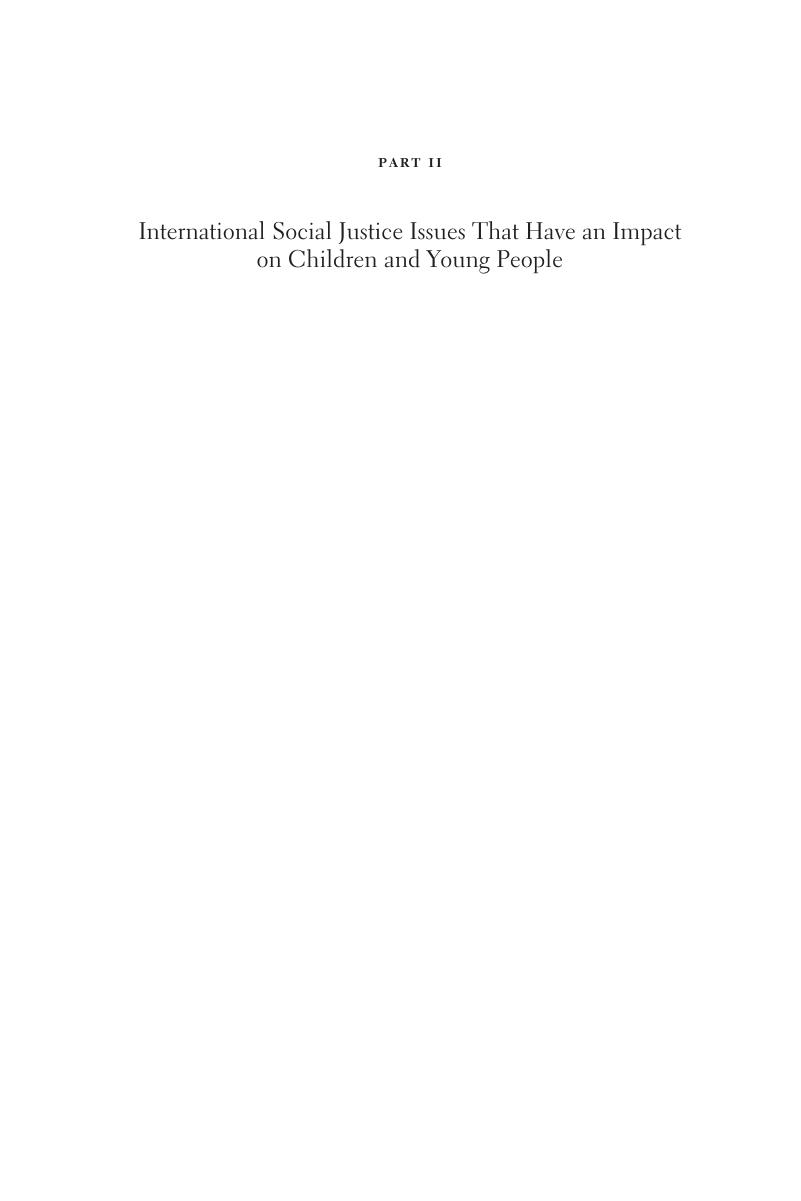Book contents
- Social Justice for Children and Young People
- Social Justice for Children and Young People
- Copyright page
- Dedication
- Contents
- Contributors
- Foreword
- Part I Social Justice and Human Rights for Children and Young People
- Part II International Social Justice Issues That Have an Impact on Children and Young People
- Part III Regional and Country Case Studies on Social Justice for Youth
- Part IV Conclusion
- References
Part II - International Social Justice Issues That Have an Impact on Children and Young People
Published online by Cambridge University Press: 18 September 2020
- Social Justice for Children and Young People
- Social Justice for Children and Young People
- Copyright page
- Dedication
- Contents
- Contributors
- Foreword
- Part I Social Justice and Human Rights for Children and Young People
- Part II International Social Justice Issues That Have an Impact on Children and Young People
- Part III Regional and Country Case Studies on Social Justice for Youth
- Part IV Conclusion
- References
Summary

- Type
- Chapter
- Information
- Social Justice for Children and Young PeopleInternational Perspectives, pp. 69 - 244Publisher: Cambridge University PressPrint publication year: 2020



